Essential Equipment to Elevate Your Lacrosse TrainingEssential Equipment to Elevate Your Lacrosse Training
Quality Lacrosse Sticks for Optimal Ball Control
Having the right lacrosse stick is crucial for developing top-notch ball control and handling skills. The optimal lacrosse stick has a head designed for quick passes, accurate shots, and slick cradling. The shaft should feel lightweight yet sturdy in your hands. Stick flex and pocket depth are also key factors that affect ball control. For example, a soft, flexible stick with a deep pocket is ideal for beginning players learning to cradle and pass. As you advance, a stiffer stick with a shallow pocket gives you more command over ball handling.
When shopping for lacrosse sticks, pay attention to your position too. Attack players tend to use more flexible sticks for dexterous dodging and passing. Defensemen opt for stiffer sticks that can take checks without warping. Midfielders need an all-around stick since they play both offense and defense. Custom stringing provides another way to personalize your lacrosse stick’s ball control capabilities. The experts at your local lacrosse shop can advise you on pocket and stringing styles suited to your skill level and position on the field.
With the wrong lacrosse stick, even basic techniques like cradling, scooping up ground balls, and passing can feel awkward. Investing in a stick that suits your hands and playing style is a wise move. As your skills develop, you may need to upgrade from a beginner’s stick to an intermediate or even advanced one. Don’t wait too long though, or you’ll plateau in your progress. Pay attention when your lacrosse stick starts holding you back instead of propelling you forward. That’s the time for an equipment upgrade so you can reach the next level of ball control mastery.
Lacrosse Protective Gear to Prevent Injuries

Lacrosse is an intense full contact sport, so wearing protective gear is essential. The required equipment includes a helmet, shoulder pads, arm pads, gloves, and a mouthguard. Though it may seem cumbersome at first, lacrosse protective gear allows you to play safely and aggressively. The gear absorbs checks, slashes, errant sticks, and high-speed shots that are common occurrences in practices and games.
Helmets with a face mask are a must. Models with extra ventilation keep you cooler as the action heats up. Lacrosse shoulder pads cushion your upper body from checks while allowing mobility. Arm pads protect your elbows, wrists, and forearms from slashes and cross-checks. Protective gloves safeguard your hands and wrists when cradling and passing. A custom fitted mouthguard prevents serious dental injuries caused by a stick or ball impact. Goalies require extra padding like chest protectors and throat guards due to the number of high-speed shots they face.
Lacrosse protective gear comes in different sizes for a proper fit. Measure your body parts like your head, shoulders, chest, arms, and waist when sizing gear. Pieces that are too tight restrict movement while oversized gear leaves gaps making you vulnerable. Try on different brands since sizing varies. Female players need gear designed specifically for a woman’s build. Your gear should allow free range of motion while covering all vulnerable zones. Break in pads and gloves over a few practices so they move naturally with your body. Inspect all equipment before each game and replace worn or damaged gear.
Though lacrosse protective equipment may seem bulky and restrictive at first, you’ll appreciate the protection when aggressive play leads to routine body blows. Safety has to be the top priority so you can play your best game without fear of injury. High-quality, properly-fitted gear gives you the confidence to check, pass, catch, shoot, and scoop without holding back.
Lacrosse Goals for Shooting Practice

Perfecting your shooting accuracy requires regular practice on regulation lacrosse goals. Setting up real goals on a field isn’t always feasible for solo practice sessions though. Fortunately, there are portable lacrosse goal options that provide netted targets for any location.
Full-size foldable lacrosse goals are handy for backyard practice. They assemble and disassemble quickly while still mimicking regulation sizes. Weighted goals ensure stability even during intense shooting reps. For maximum portability, opt for pop-up style goals that collapse into a compact carry bag. The quick set-up and tear-down makes them ideal for taking to parks or open spaces for practice. Adjustable goals allow you to vary the width, so you can hone in on top corners, high shots, and other precision placement.
Other options include wall-mounted rebounder nets and screens that attach to upright posts or slide onto chain link fences. Look for rebounders with multiple shooting surfaces at different heights and angles. Solo practice nets with wrapped edges allow you to sharpen your overhand, sidearm, and underhand shooting from close range. For indoor shooting practice any time, miniature tabletop goals and stick targets offer fun ways to get reps in. Weather, lack of field space and practice partners won’t limit your shooting practice with portable lacrosse goals.
No matter what type of moveable lacrosse goal you choose, consistency is key for developing your shooting prowess. Set up your portable goal in a spot with a solid backdrop to prevent errant misses. Angle it to mimic game-like shots on goal. Use floor or turf tape to mark off regulation distances like eight meters and twelve meters for shot drills. Log your makes and misses from each spot and track your progress over time. Don’t just fire random shots. Structure your lacrosse shooting practice with measured, focused repetition to become a feared scorer.
Lacrosse Rebounders to Improve Reaction Time
When to Upgrade Your Lacrosse Stick
Is your current lacrosse stick holding you back? As your skills develop, you may need to transition from a beginner’s stick to an intermediate or advanced model. Pay attention to signs that your equipment is limiting your progress, such as difficulty executing more complex techniques or feeling a lack of control during gameplay. Upgrading at the right time can help you break through skill plateaus and reach new levels of performance.
Protective Gear: Safeguarding Players in a High-Impact Sport
Lacrosse is a full-contact sport that demands robust protective equipment. The essential protective gear for lacrosse players includes:
- Helmet with face mask
- Shoulder pads
- Arm pads
- Gloves
- Mouthguard
Each piece of equipment serves a crucial role in player safety. Helmets protect against head injuries and facial impacts, while shoulder pads absorb the force of body checks. Arm pads shield against slashes and cross-checks, and gloves protect hands and wrists during stick handling and shooting. A properly fitted mouthguard is essential for preventing dental injuries.

Goalies require additional protection, including chest protectors and throat guards, due to their exposure to high-velocity shots. When selecting protective gear, consider factors such as ventilation, mobility, and fit. Properly sized equipment should allow for a full range of motion while providing comprehensive coverage of vulnerable areas.
The Importance of Proper Fit in Lacrosse Protective Gear
How does the fit of protective gear impact a player’s performance and safety? Ill-fitting equipment can hinder movement and leave gaps in protection. To ensure optimal fit:
- Measure key body parts, including head circumference, shoulder width, and chest size
- Try on different brands, as sizing can vary between manufacturers
- Choose gear designed specifically for your body type (e.g., women’s-specific equipment for female players)
- Allow for a break-in period to ensure gear moves naturally with your body
Regularly inspect your protective equipment for signs of wear or damage, and replace items as needed to maintain optimal protection throughout your lacrosse career.
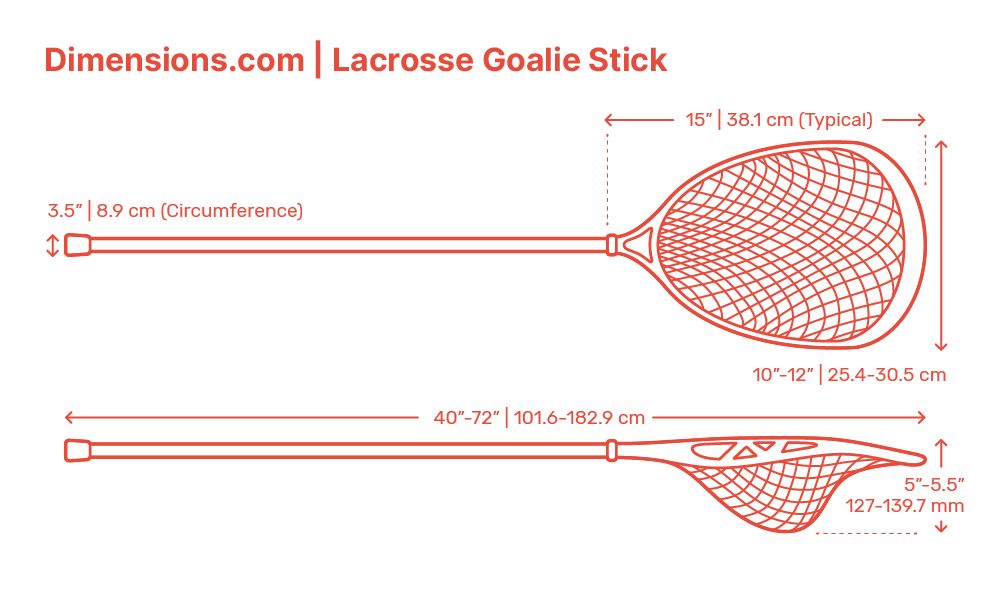
Lacrosse Goals: Perfecting Your Shot with Targeted Practice
Consistent shooting practice is essential for improving accuracy and power. While regulation lacrosse goals are ideal, they’re not always practical for individual training sessions. Fortunately, a variety of portable goal options exist to facilitate shooting practice in diverse settings:
- Foldable full-size goals for backyard practice
- Pop-up goals for maximum portability
- Adjustable goals for precision targeting
- Wall-mounted rebounder nets for solo practice
- Fence-mounted screens for versatile training setups
When selecting a practice goal, consider factors such as size, stability, and ease of assembly. Weighted goals provide stability during intense shooting sessions, while pop-up goals offer unparalleled convenience for on-the-go practice.
Maximizing Shooting Practice with Varied Targets
How can you diversify your shooting practice to improve overall accuracy? Incorporate different types of targets and angles into your training routine:
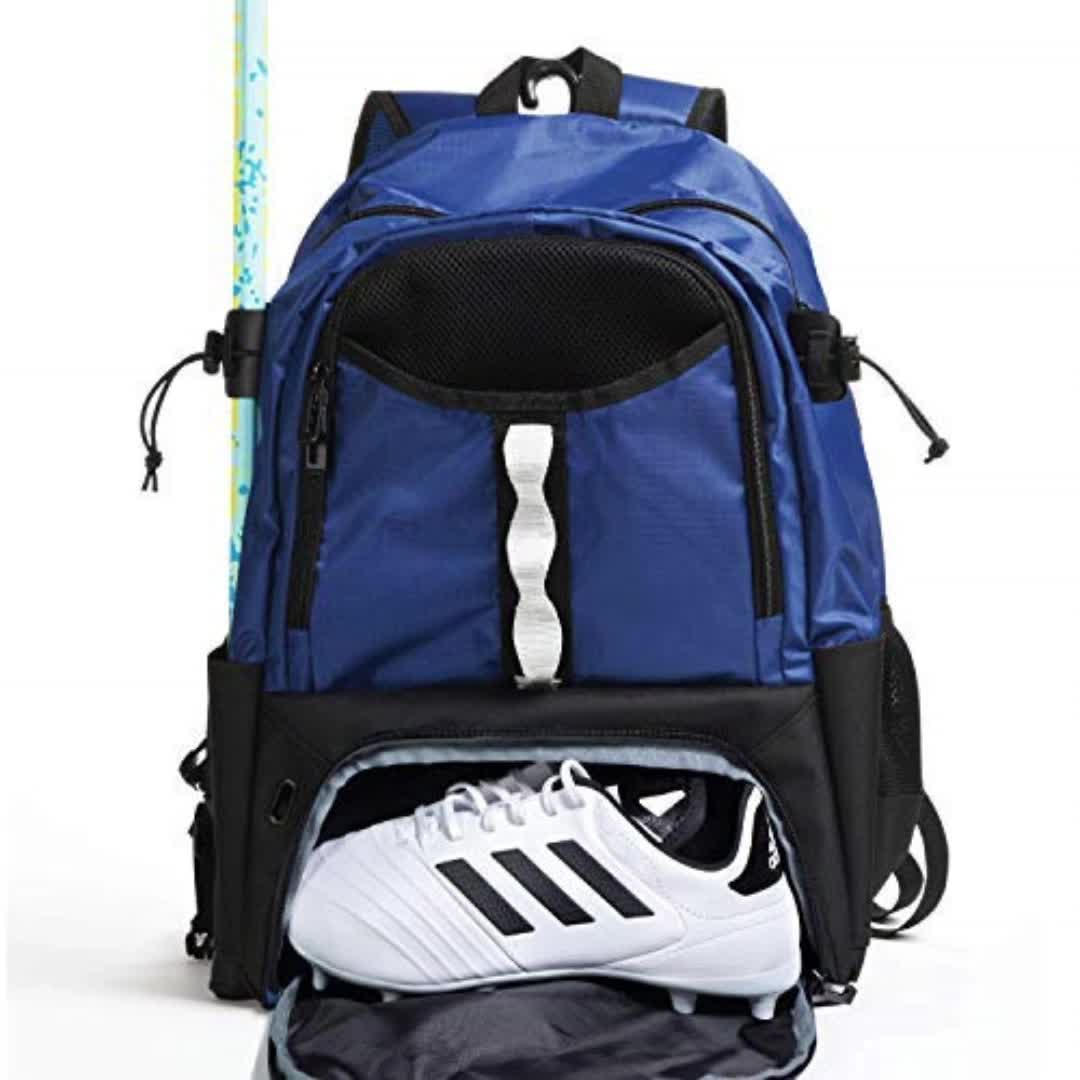
- Use adjustable goals to practice hitting specific areas of the net
- Incorporate rebounders with multiple surfaces to work on different shot types
- Set up targets at varying distances to improve range and power
- Practice both stationary and on-the-move shooting to simulate game situations
By varying your practice targets and scenarios, you can develop a well-rounded shooting skill set that translates effectively to game situations.
Training Aids: Accelerating Skill Development
Beyond the basic equipment, various training aids can help lacrosse players refine their skills more efficiently. These specialized tools focus on specific aspects of the game, allowing for targeted improvement in key areas:
Stick Skills Enhancement Tools
- Wall ball targets: Improve passing accuracy and catching reflexes
- Stick weights: Strengthen wrists and forearms for better stick control
- Ball return systems: Practice rapid-fire catching and throwing
Agility and Footwork Training Equipment
- Agility ladders: Enhance foot speed and coordination
- Cone sets: Practice quick direction changes and dodging maneuvers
- Speed parachutes: Build explosive acceleration
Conditioning and Strength Training Gear
- Resistance bands: Develop sport-specific strength and flexibility
- Medicine balls: Improve core strength and rotational power
- Weighted vests: Increase overall endurance and power
Incorporating these training aids into your practice routine can help you target specific areas for improvement, leading to more rapid skill development and enhanced on-field performance.
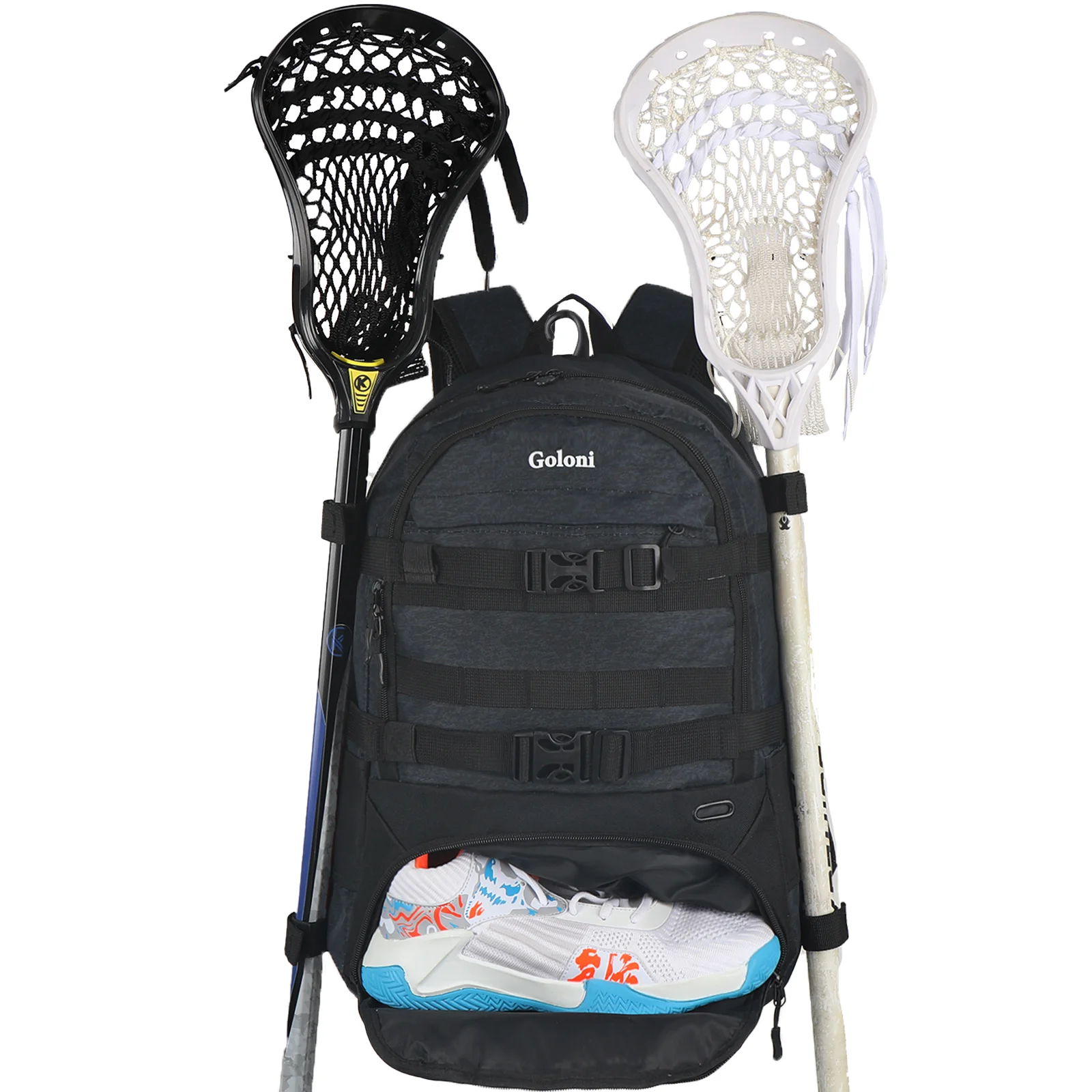
Footwear: The Foundation of Agility and Stability
Proper footwear is crucial for lacrosse players, providing the necessary traction, support, and agility for quick movements on various playing surfaces. When selecting lacrosse cleats, consider the following factors:
- Cleat type: Molded cleats for versatility, detachable cleats for customization
- Ankle support: Low-cut for agility, mid-cut for balance of support and mobility
- Material: Synthetic for durability, leather for comfort and fit
- Field surface: Different cleat patterns for natural grass vs. artificial turf
Investing in high-quality lacrosse-specific cleats can significantly improve your on-field performance by enhancing your ability to make quick cuts, accelerate rapidly, and maintain stability during intense play.
The Impact of Proper Footwear on Performance and Injury Prevention
How does footwear affect a player’s performance and risk of injury? Appropriate lacrosse cleats provide several benefits:
- Improved traction for quick starts and stops
- Enhanced stability during lateral movements
- Reduced risk of slips and falls
- Better shock absorption to protect joints
- Improved energy transfer for faster running and cutting
By choosing cleats that match your playing style, field conditions, and foot shape, you can optimize your performance while minimizing the risk of common foot and ankle injuries associated with lacrosse.
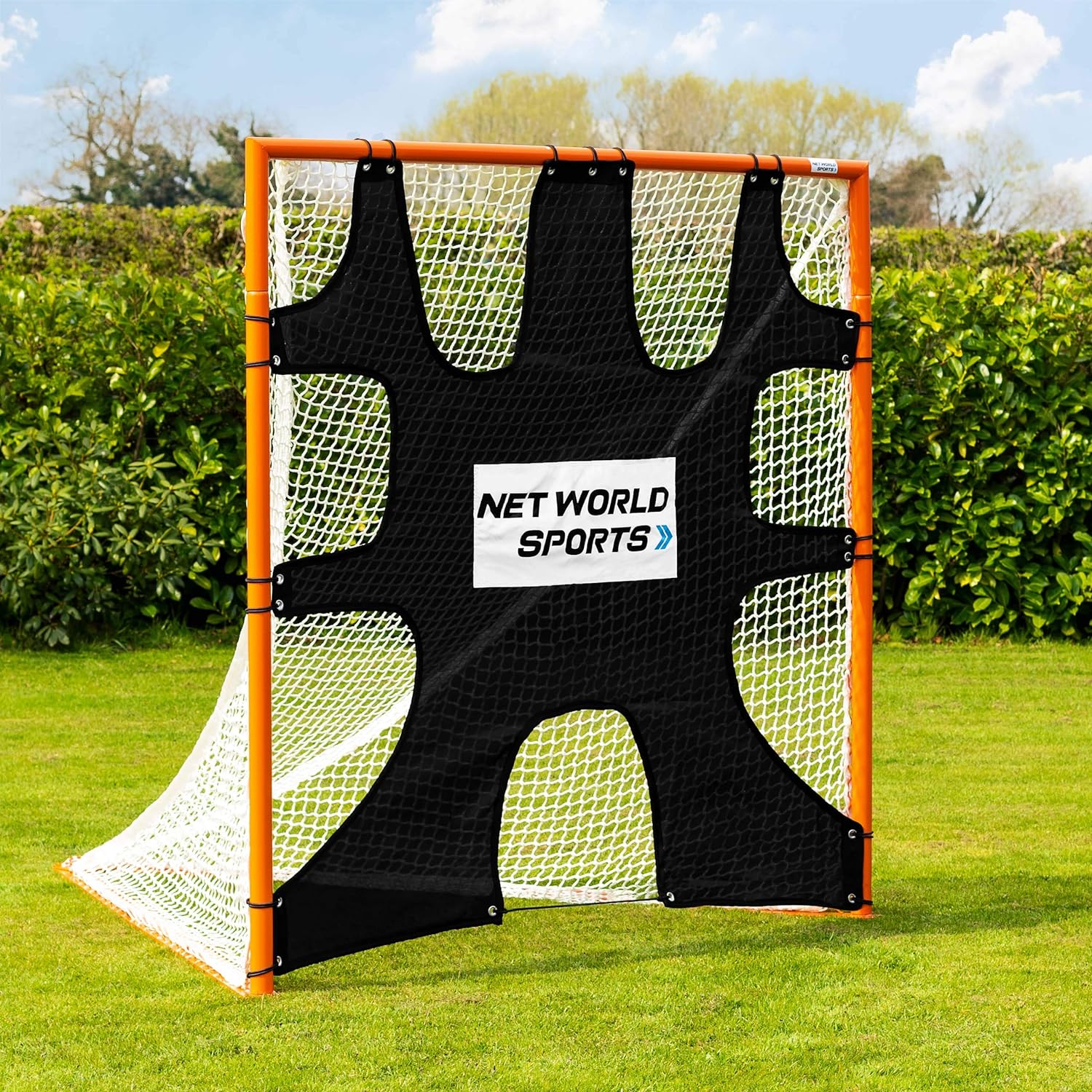
Ball Selection: Choosing the Right Lacrosse Ball for Practice and Play
While often overlooked, the selection of lacrosse balls can impact both practice effectiveness and game performance. Different types of lacrosse balls are designed for various purposes:
Game Balls
Official game balls must meet specific standards set by governing bodies. These balls are typically white and have precise specifications for size, weight, and bounce. Using regulation game balls in practice helps players acclimate to the feel and behavior of balls used in competitive play.
Practice Balls
Practice balls come in various colors and materials. Some options include:
- Soft practice balls: Ideal for beginners or indoor use
- Weighted balls: Help develop arm strength and shooting power
- Rubber practice balls: Durable for frequent use and wall ball sessions
Specialty Training Balls
Certain training balls are designed to enhance specific skills:
- Swax Lax balls: Soft exterior with regulation weight for safer indoor practice
- Vision-enhancing balls: Feature bright colors or patterns to improve tracking skills
- Dimpled balls: Provide extra grip for stick skill development
By incorporating a variety of ball types into your training regimen, you can target different aspects of your game and adapt to various playing conditions.
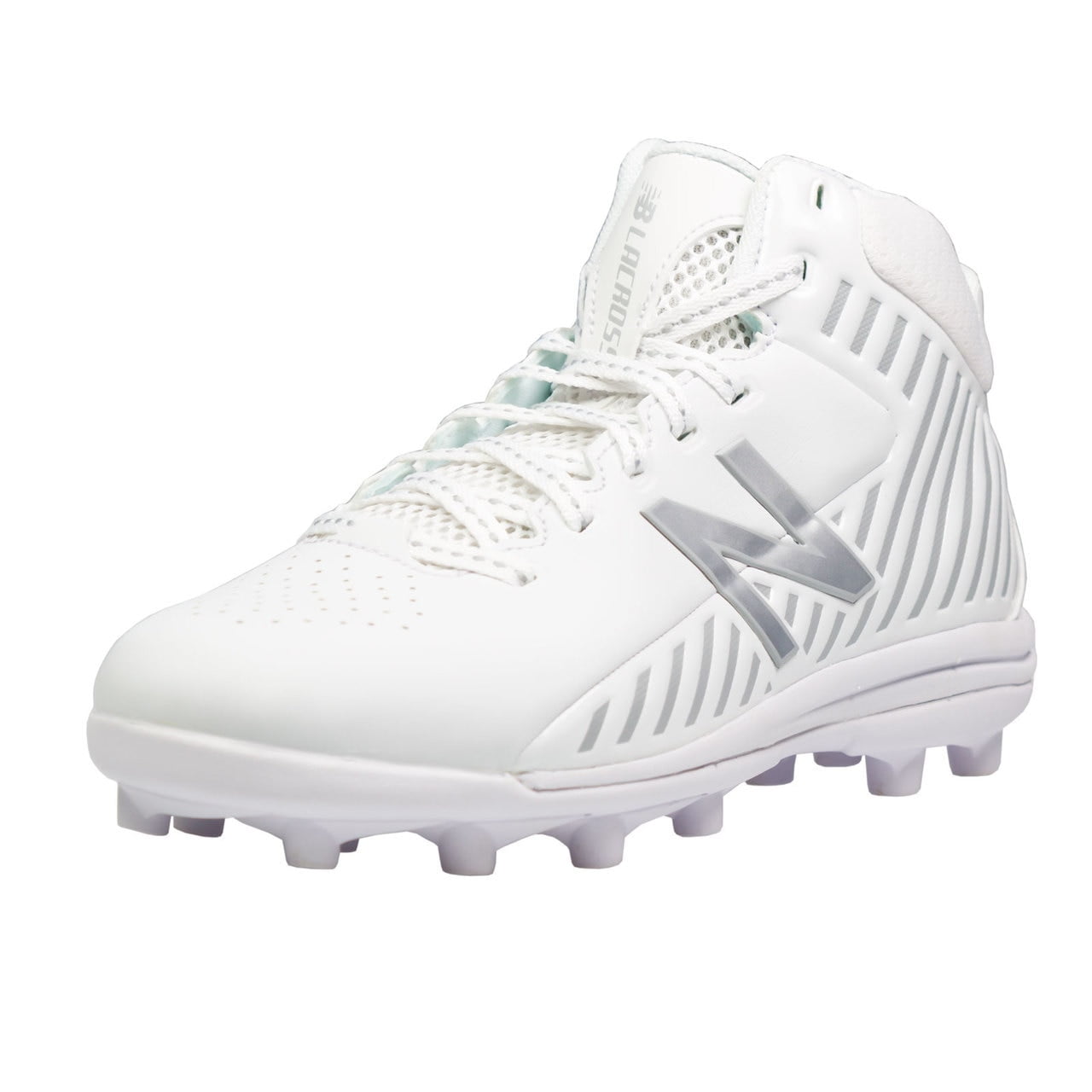
Hydration and Nutrition Equipment: Fueling Performance on the Field
Proper hydration and nutrition are critical for maintaining peak performance during lacrosse practices and games. The right equipment can help players stay fueled and hydrated effectively:
Hydration Gear
- Water bottles: Durable, easy-to-clean bottles with secure lids
- Hydration packs: For continuous access to fluids during extended training sessions
- Electrolyte tablets or powders: To replenish essential minerals lost through sweat
Nutrition Equipment
- Protein shakers: For quick, on-the-go nutrition
- Gel packs: Provide easily digestible energy during intense activity
- Snack containers: To store and transport healthy, energy-boosting foods
Investing in quality hydration and nutrition equipment ensures that players have easy access to the fuel they need to perform at their best throughout practices and games.
The Role of Proper Hydration in Lacrosse Performance
How does hydration impact a lacrosse player’s performance? Adequate hydration is crucial for:

- Maintaining endurance and preventing fatigue
- Regulating body temperature during intense activity
- Improving cognitive function and decision-making on the field
- Reducing the risk of heat-related illnesses
- Facilitating proper muscle function and reducing cramping
By prioritizing hydration and nutrition through the use of appropriate equipment, players can optimize their performance and recover more effectively between training sessions and games.
Lacrosse Bags: Organizing and Transporting Your Gear
A well-designed lacrosse bag is essential for keeping your equipment organized, protected, and easily transportable. When selecting a lacrosse bag, consider the following features:
- Size: Ample space to accommodate all your gear, including stick(s)
- Compartments: Multiple pockets for organized storage of smaller items
- Ventilation: Mesh panels or vents to prevent odor buildup
- Durability: Strong materials and reinforced stitching to withstand frequent use
- Comfort: Padded straps and ergonomic design for easy carrying
Many lacrosse bags feature specialized compartments for wet gear, cleats, and valuable items, helping to keep your equipment clean and organized.

Maximizing Bag Space and Organization
How can players optimize their bag packing for efficient gear management? Consider these tips:
- Use smaller bags or containers within your main bag to separate items
- Pack heavier items at the bottom of the bag for better weight distribution
- Keep frequently used items easily accessible in exterior pockets
- Use a hanging organizer in your bag for smaller accessories
- Invest in a stick bag to protect your lacrosse stick during transport
By maintaining an organized lacrosse bag, players can ensure they have all necessary equipment readily available, reducing stress and preparation time before practices and games.
Maintenance Tools: Preserving Your Lacrosse Equipment
Proper maintenance of lacrosse equipment is crucial for extending its lifespan and ensuring optimal performance. Essential maintenance tools and supplies include:
Stick Maintenance
- Mesh: For restringing or replacing worn pockets
- Sidewall and shooting string: To adjust pocket depth and ball release
- String wax: To protect strings from wear and weather
- Pocket pounder: To break in new mesh or adjust pocket shape
Protective Gear Maintenance
- Cleaning solutions: Specifically designed for sports equipment
- Disinfectant spray: To eliminate odor-causing bacteria
- Replacement parts: Such as helmet screws, chin straps, or pad inserts
General Equipment Care
- Gear bags: To store and protect equipment when not in use
- Drying racks: To air out gear and prevent mold growth
- Lubricants: For maintaining moving parts on helmets and pads
Regular maintenance not only prolongs the life of your equipment but also ensures it continues to provide optimal protection and performance throughout its lifespan.

Developing an Equipment Maintenance Routine
How can players establish an effective maintenance routine for their lacrosse gear? Consider implementing the following practices:
- Clean and air out protective gear after each use
- Regularly inspect equipment for signs of wear or damage
- Tighten screws and adjust straps on helmets and pads before each session
- Restring your stick as needed to maintain optimal pocket shape and depth
- Store equipment in a cool, dry place to prevent degradation
By incorporating these maintenance practices into your routine, you can ensure your lacrosse equipment remains in top condition, supporting your performance and safety on the field.
Quality Lacrosse Sticks for Optimal Ball Control
Having the right lacrosse stick is crucial for developing top-notch ball control and handling skills. The optimal lacrosse stick has a head designed for quick passes, accurate shots, and slick cradling. The shaft should feel lightweight yet sturdy in your hands. Stick flex and pocket depth are also key factors that affect ball control. For example, a soft, flexible stick with a deep pocket is ideal for beginning players learning to cradle and pass. As you advance, a stiffer stick with a shallow pocket gives you more command over ball handling.
When shopping for lacrosse sticks, pay attention to your position too. Attack players tend to use more flexible sticks for dexterous dodging and passing. Defensemen opt for stiffer sticks that can take checks without warping. Midfielders need an all-around stick since they play both offense and defense. Custom stringing provides another way to personalize your lacrosse stick’s ball control capabilities. The experts at your local lacrosse shop can advise you on pocket and stringing styles suited to your skill level and position on the field.
With the wrong lacrosse stick, even basic techniques like cradling, scooping up ground balls, and passing can feel awkward. Investing in a stick that suits your hands and playing style is a wise move. As your skills develop, you may need to upgrade from a beginner’s stick to an intermediate or even advanced one. Don’t wait too long though, or you’ll plateau in your progress. Pay attention when your lacrosse stick starts holding you back instead of propelling you forward. That’s the time for an equipment upgrade so you can reach the next level of ball control mastery.
Lacrosse Protective Gear to Prevent Injuries

Lacrosse is an intense full contact sport, so wearing protective gear is essential. The required equipment includes a helmet, shoulder pads, arm pads, gloves, and a mouthguard. Though it may seem cumbersome at first, lacrosse protective gear allows you to play safely and aggressively. The gear absorbs checks, slashes, errant sticks, and high-speed shots that are common occurrences in practices and games.
Helmets with a face mask are a must. Models with extra ventilation keep you cooler as the action heats up. Lacrosse shoulder pads cushion your upper body from checks while allowing mobility. Arm pads protect your elbows, wrists, and forearms from slashes and cross-checks. Protective gloves safeguard your hands and wrists when cradling and passing. A custom fitted mouthguard prevents serious dental injuries caused by a stick or ball impact. Goalies require extra padding like chest protectors and throat guards due to the number of high-speed shots they face.
Lacrosse protective gear comes in different sizes for a proper fit. Measure your body parts like your head, shoulders, chest, arms, and waist when sizing gear. Pieces that are too tight restrict movement while oversized gear leaves gaps making you vulnerable. Try on different brands since sizing varies. Female players need gear designed specifically for a woman’s build. Your gear should allow free range of motion while covering all vulnerable zones. Break in pads and gloves over a few practices so they move naturally with your body. Inspect all equipment before each game and replace worn or damaged gear.
Though lacrosse protective equipment may seem bulky and restrictive at first, you’ll appreciate the protection when aggressive play leads to routine body blows. Safety has to be the top priority so you can play your best game without fear of injury. High-quality, properly-fitted gear gives you the confidence to check, pass, catch, shoot, and scoop without holding back.
Lacrosse Goals for Shooting Practice

Perfecting your shooting accuracy requires regular practice on regulation lacrosse goals. Setting up real goals on a field isn’t always feasible for solo practice sessions though. Fortunately, there are portable lacrosse goal options that provide netted targets for any location.
Full-size foldable lacrosse goals are handy for backyard practice. They assemble and disassemble quickly while still mimicking regulation sizes. Weighted goals ensure stability even during intense shooting reps. For maximum portability, opt for pop-up style goals that collapse into a compact carry bag. The quick set-up and tear-down makes them ideal for taking to parks or open spaces for practice. Adjustable goals allow you to vary the width, so you can hone in on top corners, high shots, and other precision placement.
Other options include wall-mounted rebounder nets and screens that attach to upright posts or slide onto chain link fences. Look for rebounders with multiple shooting surfaces at different heights and angles. Solo practice nets with wrapped edges allow you to sharpen your overhand, sidearm, and underhand shooting from close range. For indoor shooting practice any time, miniature tabletop goals and stick targets offer fun ways to get reps in. Weather, lack of field space and practice partners won’t limit your shooting practice with portable lacrosse goals.
No matter what type of moveable lacrosse goal you choose, consistency is key for developing your shooting prowess. Set up your portable goal in a spot with a solid backdrop to prevent errant misses. Angle it to mimic game-like shots on goal. Use floor or turf tape to mark off regulation distances like eight meters and twelve meters for shot drills. Log your makes and misses from each spot and track your progress over time. Don’t just fire random shots. Structure your lacrosse shooting practice with measured, focused repetition to become a feared scorer.
Lacrosse Rebounders to Improve Reaction Time
Quick reaction time is a must for lacrosse goalies and defensive players. Lacrosse rebounders are an excellent training tool to sharpen reflexes and improve save speed. Rebounders rapidly return balls to emulate the pace and unpredictability of game shots.
Full-size rebound nets attach to lacrosse goals at varying angles. Rapid-fire shots ricochet off the taut netting from all directions, forcing keepers to react instinctively. The kinetic energy absorption prevents balls from losing speed or pop. Models with durable bungee or band assemblies stand up to intense goalie workouts. For solo close-range rebound practice, portable bounce-back targets fit in the goal mouth. The angled pocket fires balls straight back at the shooter.
Simple wall-mounted lacrosse rebounders turn any solid wall into a practice partner. Attach a durable nylon net or high-bounce screening to brick, block, or chain link walls. Use rebounders with varying pocket depths and grid patterns to randomize ball return speeds and trajectories. Free-standing steel frame rebounders provide a backstop solution for any surface. Rotate the angle bar to spit shots right back for dynamic reaction drills.
Agility ladders placed in front of rebounders add a footwork challenge element. As balls zing off the netting from unpredictable paths, keepers and defenders must run, pivot, and change direction quickly. Using rebounders for individual practice, shooting drills, or small group training provides a game-realistic workout. Facing that nonstop ball barrage trains your eyes, hands, feet, and reflexes to be ready for the speed of live game action.
Lacrosse Training Cones for Agility Drills

Agility and quickness are vital physical skills in lacrosse. Setting up cone drills builds coordination, balance, foot speed, and reaction time. Varying the patterns and spacing challenges players to change direction on a dime like they must in game situations.
Tall sports cones allow coaches and players to lay out precise directional patterns on the field. Zigzag patterns with cones spaced just steps apart hone lateral speed and explosive starts and stops. Jump drills over low cones improve vertical leaping ability for snagging high passes. Place cones randomly around the field and call out colors for players to sprint and touch. This improves reaction time and reactive agility.
Weave cones into patterns that mimic dodging offensive players or mirroring swift cuts and rolls in the crease. Defenders strengthen change of direction skills and stride acceleration needed to mark their man. For goalies, make passing lanes with cones and fire shots through the gaps to improve repositioning and angle play. Timed competitive drills through cones add fun and extra motivation to boost speed.
Winding slalom courses using a line of cones develop full-body control while maneuvering at top speeds. Place cones at varying distances apart to emphasise stride length and rhythmic footwork. Direction reversal drills by placing cones opposite each other improve balance and body control. Add ball-handling skills like cradling, catching, and scooping into cone patterns to mirror game movements. Quick footwork and fluid athleticism translate directly into lacrosse prowess.
Lacrosse Agility Ladders for Footwork Skills

Lacrosse players require cat-like agility to maneuver around defenders and explode out of cuts. Agility ladders build the complex footwork skills needed for changing pace and direction swiftly on the field. These portable ladder drills can be done anywhere to boost lacrosse-specific quickness.
Agility ladders have a series of rungs attached to flat bands. Lay the ladder on grass, turf or flooring and run through using different foot patterns. Two feet in each box improves coordination and rhythmic steps. One foot in each box builds single leg stability for pivots and lateral moves. Run through with high knees to gain explosive stride power. Other patterns like hopscotching, shuffling, and cariocas improve start-stop abilities.
Make agility ladder drills more game-like by carrying a stick and ball while navigating the rungs. Focus on keeping your cradling arm relaxed and top hand soft while maneuvering feet quickly. Have players run towards a partner making cuts and passing back and forth through the ladder. This combination elevates hand-eye coordination and reaction time.
Time ladder drills to track progress decreasing time and missed rungs. Move the ladder to hills or place it before cone drills or rebounder practice for a complete footwork and agility workout. Varying agility ladder patterns prevents boredom. As skills improve, quicken pace or spike intensity by adding swinging sticks, equipment like hurdles, or chasing team members. The lightweight design makes agility ladders easy to set up anywhere so lacrosse athletes can master nimble footwork.
Resistance Bands to Build Strength and Power
In lacrosse, power comes from a combination of muscular strength, speed, and explosiveness. Resistance band training develops all these athletic attributes for domination on the field. Bands come in varied resistance levels to match each athlete’s needs.
Anchor resistance bands to solid objects like goal posts, trees, or sturdy gym equipment. Gripping each end of the band in your hands provides full-body resistance during lunges, squats, curls and presses. The elastic load engages your muscles as you move through the range of motion. Progress to heavier resistance levels over time for increased strength gains.
You can also loop bands around your wrists, ankles or legs to isolate arm and leg movements. Lateral walks with ankle bands strengthen hip abductors for more powerful sprinting strides. Overhead tricep extensions with bands build powerful passing and shooting arms. Add resistance bands to your plyometric and agility drills to boost explosiveness.
Bands conveniently provide a strength workout anywhere since they are lightweight and portable. Follow along with band workout videos or apps for new challenges. Set time or rep goals with band exercises to track strength increases leading to new personal records. Maintain consistent resistance training with bands to build the muscular endurance, power and agility to dominate during those high-pressure game moments.
Weighted Lacrosse Balls for Strength Training

Handling a heavier lacrosse ball builds grip, wrist, and forearm strength for better stick control. Weighted balls also increase arm, shoulder and core power to deliver more potent shots and passes.
Look for balls weighing 10 to 15 ounces, about 2 to 3 times the weight of a regulation ball. The challenging heft strengthens cradling muscles as you move the ball around your stick through practice drills and workouts. Focus on smooth, controlled movements rather than straining with jerky motions.
Incorporate weighted ball routines into your regular practice schedule for a progress overload effect. After warming up with a few minutes of standard ball handling, spend 10-15 minutes cradling, passing and catching a weighted ball. Use Wall ball routines to build arm strength needed for powerful overhand and sidearm shooting.
As your hands, wrists and arms get stronger, you’ll notice a lighter feel when you return to a normal ball. Your shots will have more velocity and accuracy. Passes will be crisp and fast. Ground balls will practically spring into your stick. Weighted lacrosse balls build the bodily strength and control for owning every possession.
Wall-Mounted Lacrosse Nets for Solo Practice
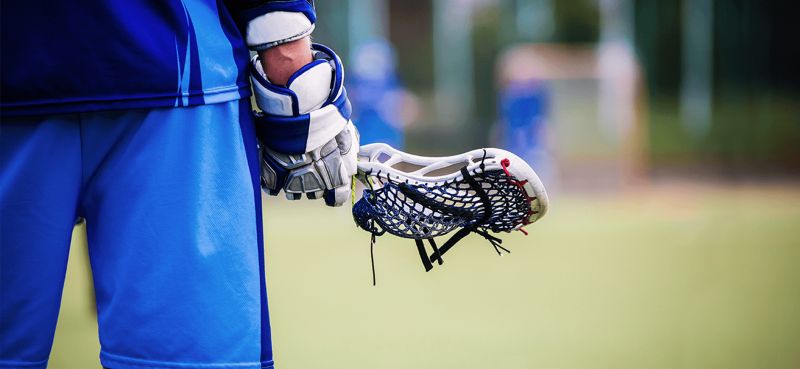
Finding an open wall and bringing a lacrosse stick turns any location into a practice zone. Wall-mounted nets provide rebound surfaces for honing shooting, passing, and catching skills solo.
Look for sturdy net frames sized at least 3 x 3 feet for adequate rebound space. Install securely to a flat, smooth wall without obstructions. Brick, block, or chain link walls work best, but you can attach wall nets to garages and solid wood fences too. Face the target area away from windows or anything fragile.
Use the entire net surface to sharpen your shot accuracy. Aim for the four corners, Top Shelf areas, and low targets. Practice catching off-target shots and quickly redirecting them into the goal space. Work on quick stick passes against the wall, catching the ball in stride and redirecting it back into the net.
Challenge yourself to make demanding catches like behind-the-back and split cradle. React quickly as errant rebounds shoot off the netting unpredictably. Wall ball also builds arm and shoulder endurance needed for a full game of play. With a simple wall-mounted net, you can practice lacrosse anywhere, anytime.
Lacrosse Training Sticks for Ball Handling
Sticking to a lacrosse ball handling and conditioning routine improves coordination, control, and reaction skills. Training sticks allow you to practice cradling, scooping, passing, and catching without a partner.
Look for lightweight shafts with molded heads designed to securely grip balls. Models with deep pockets provide ample ball control for practicing stick tricks and off-hand transfers. Use half shafts for tight quarter handling drills to build dexterity. Extendable shafts allow you to vary the length to rehearse both close and long-range passing.
Bring your training stick anywhere and use it during downtime. Watching TV? Practice quick sticks, transfers behind the back, and one-handed cradling. Listening to music? Work on sidearm windmill passes from all angles. Waiting for the bus? Scoop up an imaginary ground ball. The repetition ingrains proper technique so your hands instinctively control the ball.
Training sticks build confidence handling live balls when the pressure’s on. Muscle memory takes over so you make crisp passes, cleanly catch difficult shots, and securely cradle through traffic. Frequent ball handling reps ensure you own every possession.
Lacrosse Goalie Equipment for Shot-Stopping Training
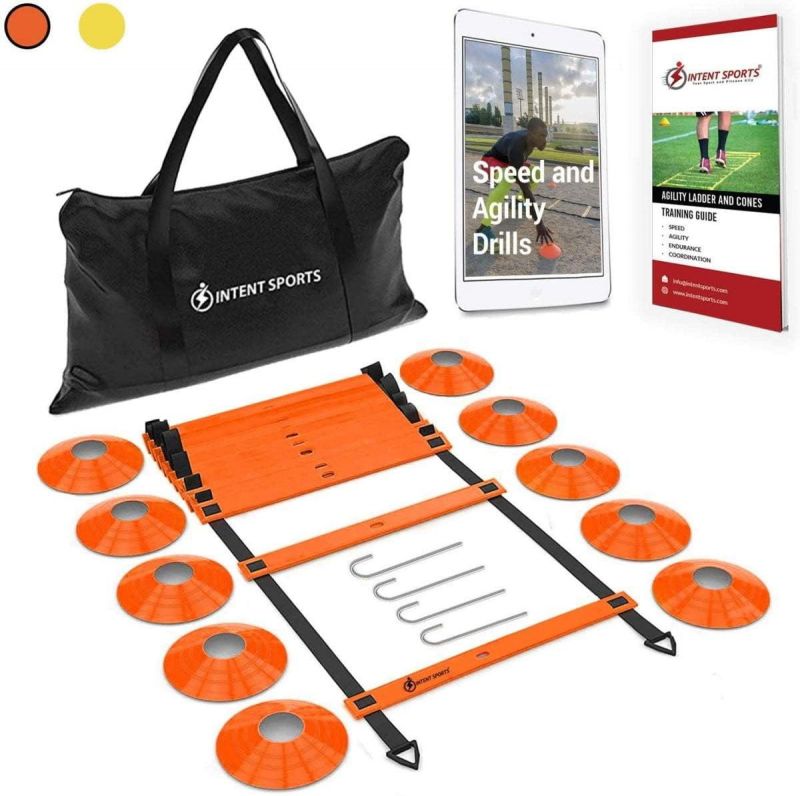
Goalies require specialized protective gear and equipment for facing a barrage of shots during practice and games. Training-specific equipment helps goalies build crucial save skills and reaction time.
Inflatable goalie gear like chest protectors allows for full motion during drills. Weighted gloves improve hand strength to securely catch and deflect blistering shots. Use stick targets and rebounders to sharpen reflexes and angle play. Quick-release systems for attaching protective gear helps shave seconds off during intense rapid fire drills.
Obstruction gloves with built-in foam blocking pads make picking off outside shots easier by increasing your reach and range. Overload trainer belts attach weights to your hips, forcing your legs and core to work harder when moving side to side. This translates into greater explosive power during games.
Rotating through a variety of shot-stopping drills with specialized goalie gear helps you develop proficiency defending all areas of the net. Face live shots without fear knowing your protective equipment can handle the impact. Strong hands, quick feet, and flexible agility combine to make you a shutdown goalie.
Lacrosse Shooting Targets for Accuracy

Sharpening shooting accuracy requires regular target practice. Portable lacrosse shooting targets provide a goal-like setup anywhere to improve your shot precision.
Full size target nets have marker lines or small pockets for picking out corners, elevating shots, and hitting tight spaces on goal. Smaller portable targets like the StarShooter stick anywhere for repetition. Models with wrap-around netting or bungee cords keep balls from spraying everywhere so you can practice solo.
For indoor shooting practice, try tabletop stick targets or weighted goal targets that don’t require staking down. Adjustable flip targets with varying holes to shoot through are another option for indoor and outdoor use. Attach targets to garage doors, solid walls, or fencing for makeshift shooting ranges. Get creative setting up challenging target scenarios.
Mix up your shooting routine with targets at different ranges and shot types like underhand, overhand, bouncing, and on-the-run shots. Tracking your hits over time shows your shooting percentage and accuracy improvements. Lacrosse shooting targets make skill refinement convenient and fun.
Lacrosse Slides for Quick Footwork
Lacrosse players need the ability to start, stop, cut, and change direction on a dime. Slide boards provide a fun way to drill the footwork and edge work skills that translate into slick on-field moves.
These low-friction plastic sheets allow you to mimic skating motions for agility training. Set up slide drills on grass or turf and glide laterally shuffling your feet quickly. Keep knees bent and weight centered as you push off the board side to side. Work on explosive starts and stops by digging edges in to slow your momentum.
Incorporate crossover steps to gain power moving in reverse directions. Have players face off on boards and mirror each other’s lateral slide movements. Add swing sticks or ball handling to increase coordination. Competitive slides races boosts effort and makes training more engaging.
Frequent slide board sessions increase your stability, balance and edge control. Tight turns and changes of pace become more natural. Breaking ankles on the field with slick cuts, rolls, and hesitations becomes second nature thanks to slide board training.
Lacrosse Conditioning Equipment for Endurance

Succeeding in lacrosse requires not just skill, but also incredible stamina to keep pushing tempo and making plays all game long. Conditioning equipment like sleds, parachutes, and weight vests build the endurance and strength vital for domination.
Sled pulls and pushes develop power and stability in your legs, hips and core. The resistance engages your muscles as you drive forward with full force. Parachutes attached to a belt or harness provide drag for sprinting drills, intensifying your leg drive and lactic acid tolerance. Weighted vests add challenging load for drills, sprints, or distance runs.
Medicine balls and slam balls build rotational power needed for the torquing motions of passing, shooting and checking. Battle ropes improve grip strength and scorch calories with full-body wave motions. Agility ladders, hurdles, and plyo boxes can be integrated into conditioning routines as well. Vary your cardio intervals using equipment like rowers, assault bikes, and versa climbers.
Combining resistance and challenging conditioning tools prevents plateaus. You build stamina and the functional strength to play at a relentless pace until the final whistle. Pushing your limits with lacrosse conditioning equipment ensures you have gas left in the tank when it matters most.


